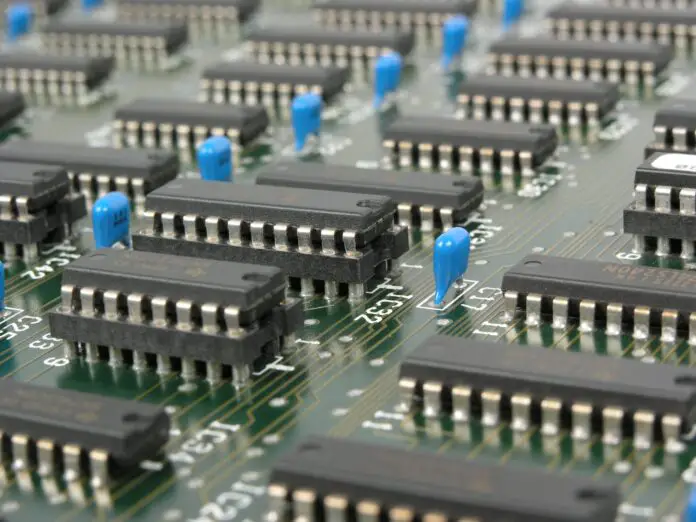
In the ever-evolving realm of Electrical Engineering, innovative research continually drives the field’s progression, shaping our future technologies and solutions. As we step into an era dominated by AI, IoT, renewable energy, and more, the scope for innovative research widens. In this article, iLovePhD listed the top 75 emerging research topics in the field of Electrical Engineering.
Top 75 Emerging Research Topics in Electrical Engineering
1. Power Systems and Renewable Energy
1.1 Smart Grids and Micro-grids
a. Distributed control strategies for micro-grid management.
b. Blockchain applications for secure energy transactions in smart grids.
c. Resilience and robustness enhancement in smart grid systems against cyber threats.
d. Integration of renewable energy sources in micro-grids.
e. AI-based predictive maintenance for smart grid components.
1.2 Energy Harvesting and Storage
a. Next-gen battery technologies for energy storage systems.
b. Wireless power transfer and energy harvesting for IoT devices.
c. Super-capacitors and their applications in renewable energy storage.
d. Materials research for efficient energy conversion and storage.
e. Energy-efficient architectures for IoT devices powered by energy harvesting.
1.3 Electric Vehicles and Transportation
a. Charging infrastructure optimization for electric vehicles.
b. Vehicle-to-grid (V2G) technology and bidirectional power flow.
c. Lightweight materials and design for electric vehicle batteries.
d. Autonomous electric vehicle technology and its integration into smart cities.
e. Energy-efficient route planning algorithms for electric vehicles.
2. Communications and Networking
2.1 5G and Beyond
a. AI-driven optimization for 5G network deployment.
b. mmWave communication technologies and their implications.
c. Quantum communication for secure and high-speed data transfer.
d. 6G technology and its potential applications.
e. Edge computing and its role in 5G networks.
2.2 IoT and Wireless Sensor Networks
a. Energy-efficient protocols for IoT devices.
b. AI-enabled edge computing for IoT applications.
c. Security and privacy in IoT data transmission.
d. Integration of AI with IoT for intelligent decision-making.
e. Communication challenges in massive IoT deployment.
2.3 Satellite and Space Communications
a. Low Earth Orbit (LEO) satellite constellations for global connectivity.
b. Inter-satellite communication for improved space exploration.
c. Secure communication protocols for space-based systems.
d. Quantum communication for secure space-based networks.
e. Space debris mitigation and communication systems.
3. Control Systems and Robotics
3.1 Autonomous Systems
a. AI-driven control for autonomous vehicles and drones.
b. Swarm robotics and their applications in various industries.
c. Human-robot collaboration in industrial settings.
d. Autonomous navigation systems for underwater vehicles.
e. Control strategies for multi-agent systems.
3.2 Biomedical and Healthcare Robotics
a. Robotics in surgical procedures and rehabilitation.
b. Wearable robotics for physical assistance and rehabilitation.
c. Robotic prosthetics and exoskeletons for enhanced mobility.
d. Telemedicine and remote healthcare using robotic systems.
e. Ethics and regulations in medical robotics.
3.3 Machine Learning and Control
a. Reinforcement learning for control system optimization.
b. Neural network-based adaptive control systems.
c. Explainable AI in control systems for better decision-making.
d. Control strategies for complex systems using deep learning.
e. Control system resilience against adversarial attacks.
4. Electronics and Nanotechnology
4.1 Nano-electronics and Quantum Computing
a. Quantum-resistant cryptography for future computing systems.
b. Development of reliable qubits for quantum computers.
c. Quantum error correction and fault-tolerant quantum computing.
d. Nano-scale transistors and their applications.
e. Hybrid quantum-classical computing architectures.
4.2 Flexible and Wearable Electronics
a. Stretchable electronics for wearable applications.
b. Smart textiles and their integration with electronic components.
c. Biocompatible electronics for healthcare monitoring.
d. Energy harvesting in wearable devices.
e. Novel materials for flexible electronic devices.
4.3 Neuromorphic Engineering and Brain-Computer Interfaces
a. Neuromorphic computing for AI and cognitive systems.
b. Brain-inspired computing architectures and algorithms.
c. Non-invasive brain-computer interfaces for diverse applications.
d. Ethics and privacy in brain-computer interface technology.
e. Neuroprosthetics and their integration with neural interfaces.
5. Signal Processing and Machine Learning
5.1 Sparse Signal Processing
a. Compressive sensing for efficient data acquisition.
b. Sparse signal reconstruction algorithms.
c. Sparse representations in machine learning.
d. Deep learning for sparse signal recovery.
e. Applications of sparse signal processing in various domains.
5.2 Explainable AI and Interpretability
a. Interpretable machine learning models for critical applications.
b. Explainable deep learning for decision-making.
c. Model-agnostic interpretability techniques.
d. Human-centric AI and its interpretability.
e. Visual and intuitive explanations in machine learning models.
5.3 Adversarial Machine Learning and Security
a. Robust deep learning models against adversarial attacks.
b. Adversarial machine learning in cybersecurity.
c. Detecting and mitigating adversarial attacks in AI systems.
d. Secure and private machine learning protocols.
e. Ethical considerations in adversarial machine learning.
As technology continues to redefine boundaries and explore new horizons, these research topics in Electrical Engineering stand at the forefront, ready to shape the future of our world. The amalgamation of these fields showcases the diversity and depth of possibilities waiting to be unlocked by the curious minds and diligent efforts of researchers and engineers in the years to come.
